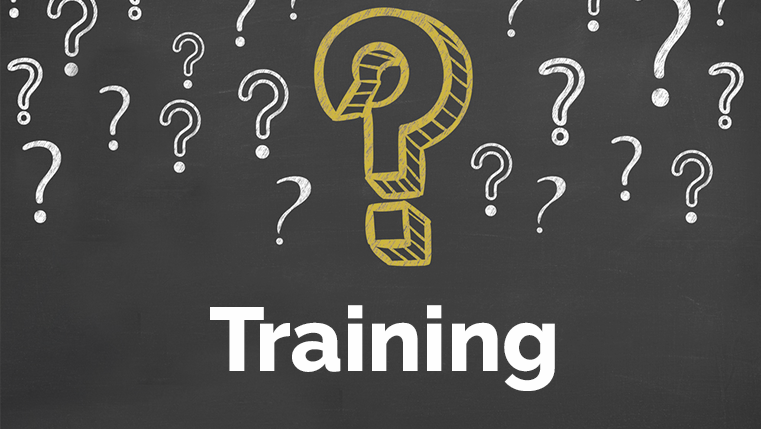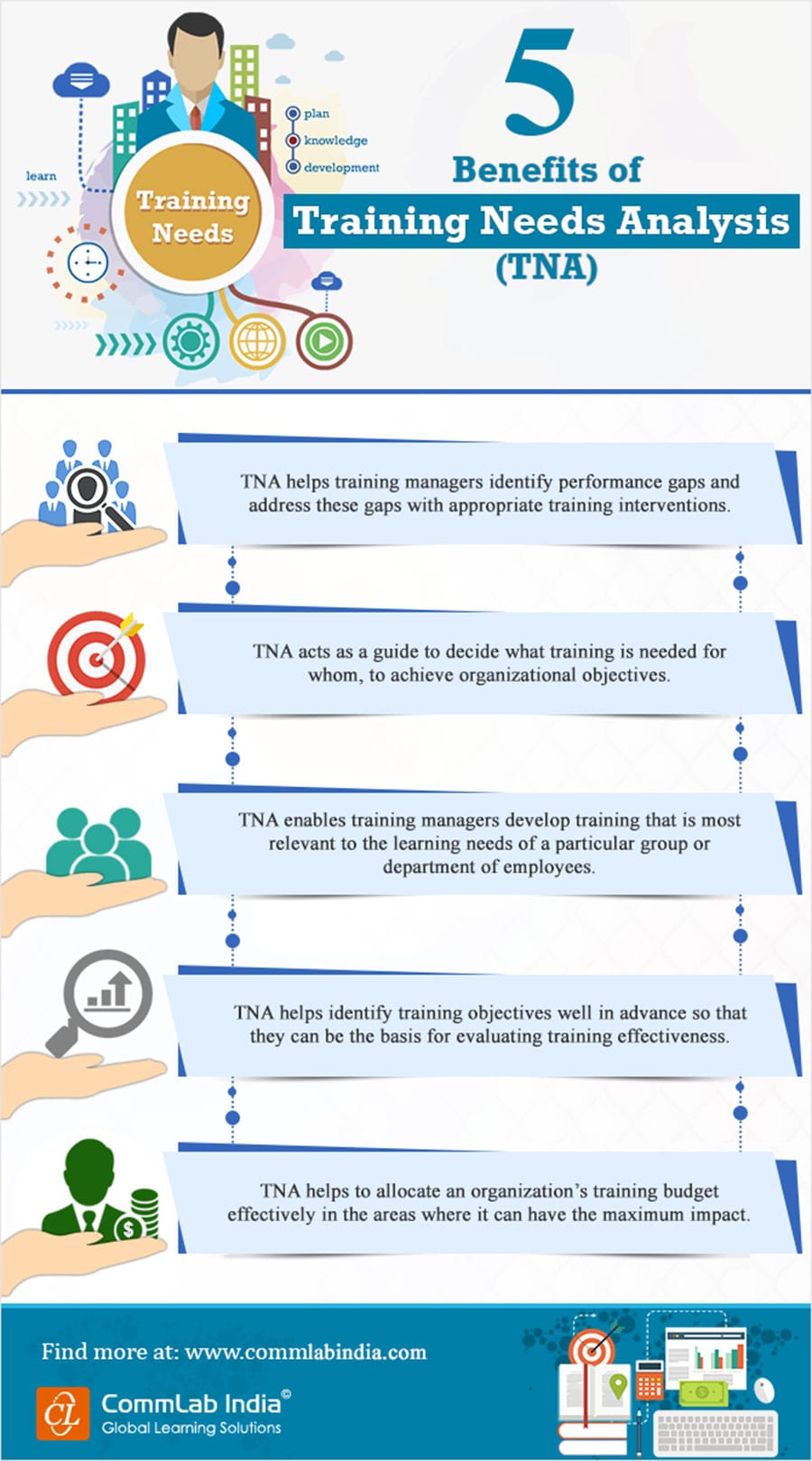5 Benefits of Training Needs Analysis[Infographic]
Explore why training needs analysis is crucial before rolling out any training program followed by an infographic mentioning its 5 noteworthy benefits.

Training Needs Analysis (TNA) is a systematic process for identifying the knowledge, skills, and competencies that employees or a group of individuals within an organization must acquire or improve to perform their jobs effectively. TNA helps organizations ensure that their training and development efforts are targeted and aligned with the specific needs of their workforce. The infographic below mentions 5 notable benefits of TNA followed by a step guide on how to carry out a seamless TNA.
5 Benefits of Training Needs Analysis
A Step-By-Step guide on How to Carry Out a Training Needs Analysis
1. Purpose and Scope Identification
Clearly define the objectives of the Training Needs Analysis (TNA), specifying the desired outcomes and the areas to be assessed. Decide the scope of the analysis, including which departments, roles, or individuals will be included. Involve key stakeholders, such as managers, employees, and HR personnel, to gather insights and perspectives on training requirements.
2. Data Collection and Analysis
Gather data from a variety of sources, such as employee surveys, interviews, performance evaluations, and job descriptions. Consider conducting focus groups or one-on-one interviews with employees to gain a deeper understanding of their needs. Analyze this data to identify performance gaps, knowledge or skill deficiencies, and specific areas requiring improvement.
→ Download eBook Now: The State of Learning - 2023 and Beyond
3. Prioritization of Training Needs
Not all training needs are of equal importance, so focus on those that will yield the most significant benefits. Prioritize identified needs based on their impact on organizational goals, strategic importance, and urgency. Clearly define the learning objectives for each training need. What specific skills or knowledge should the training address?
4. Development and Implementation of Training Programs
Based on the prioritized needs, design and develop training programs with clear learning objectives and instructional design strategies. Select the appropriate training methods, which could include workshops, online eLearning courses, on-the-job training, mentoring, or a combination of these. Implement the training programs and closely monitor their effectiveness.
5. Evaluation and Feedback
After training, assess the impact of the training on employee performance and skill development. Collect feedback from participants and their supervisors to assess the impact on performance. Adjust the training as necessary to address any shortcomings.
6. Continuous Improvement and Documentation
Continuously review and refine the TNA process and training programs to adapt to changing organizational needs and employee development requirements. Maintain thorough documentation of the entire process, including findings, recommendations, actions taken, and the impact on the organization.
Wrapping Up!
Conducting a Training Needs Analysis (TNA) serves as the compass guiding your organization toward higher performance levels. By systematically identifying and addressing knowledge and skill gaps, TNA ensures that training efforts are targeted and relevant. This process empowers employees to excel in their roles, ultimately benefiting the entire organization. Apart from TNA, there are other crucial aspects to follow and to have more insights about the same, you can check out this comprehensive eBook that will eventually help you understand the state of learning.
Editor’s note: This post was originally published in June 2018 and has been updated for comprehensiveness.







